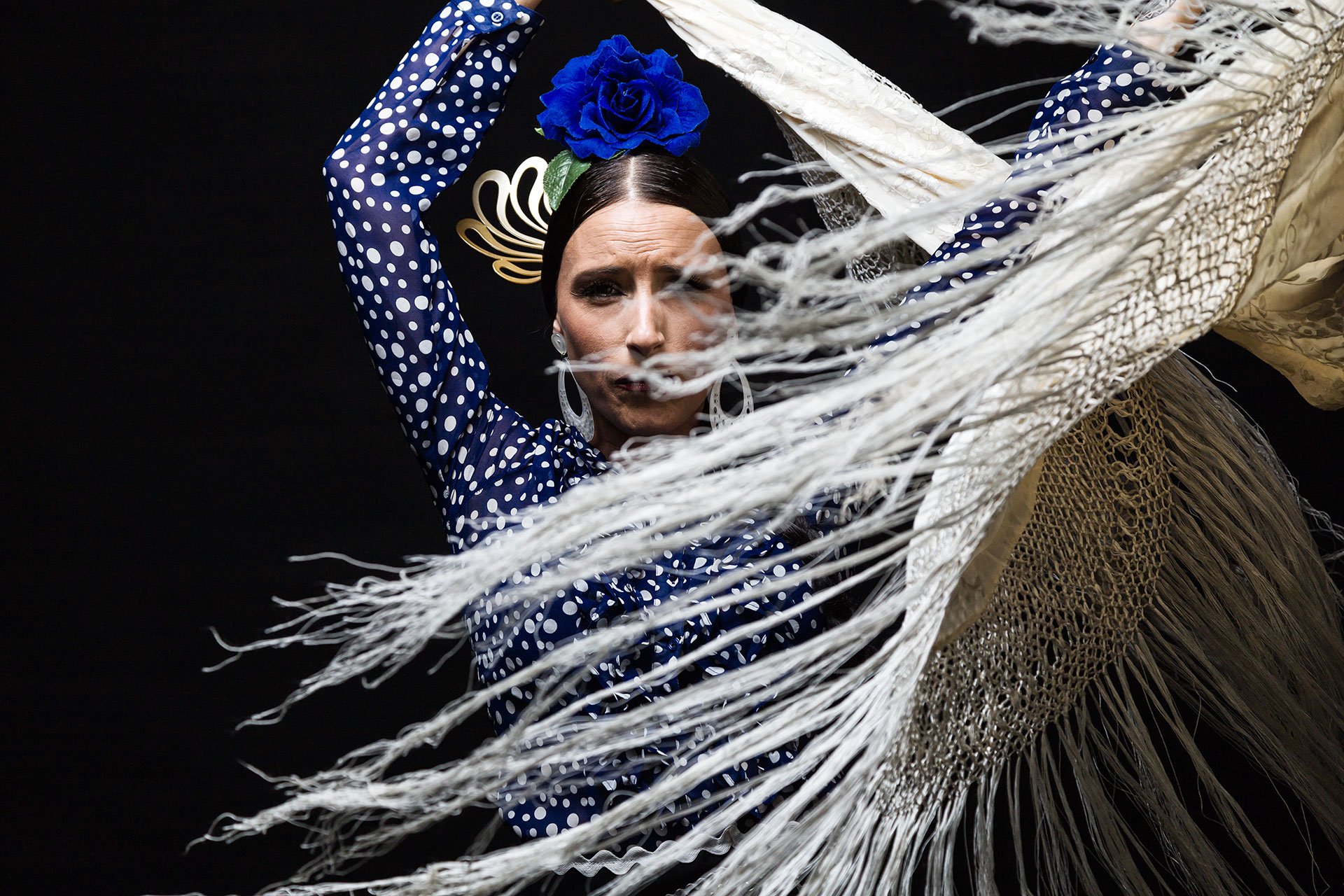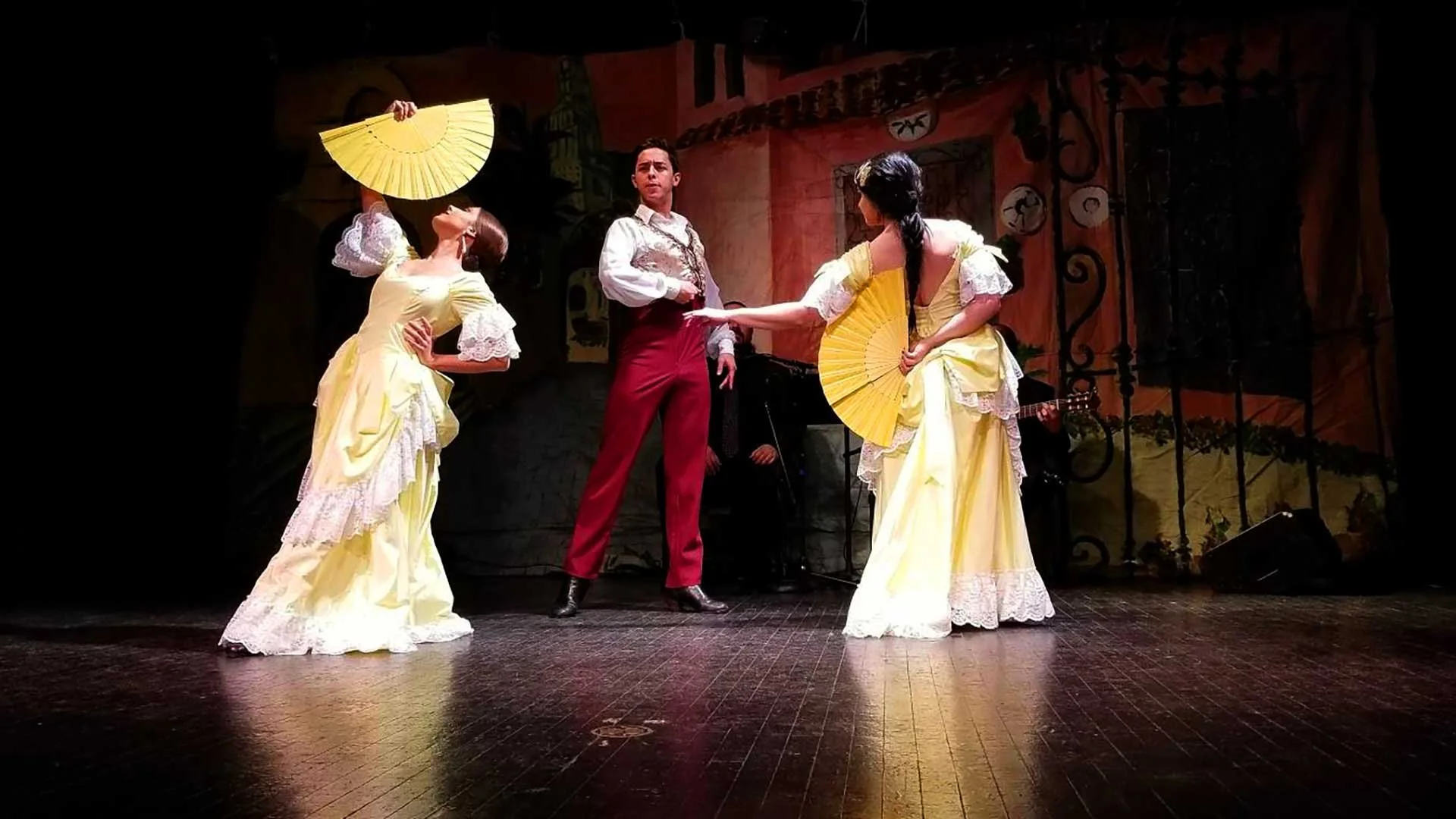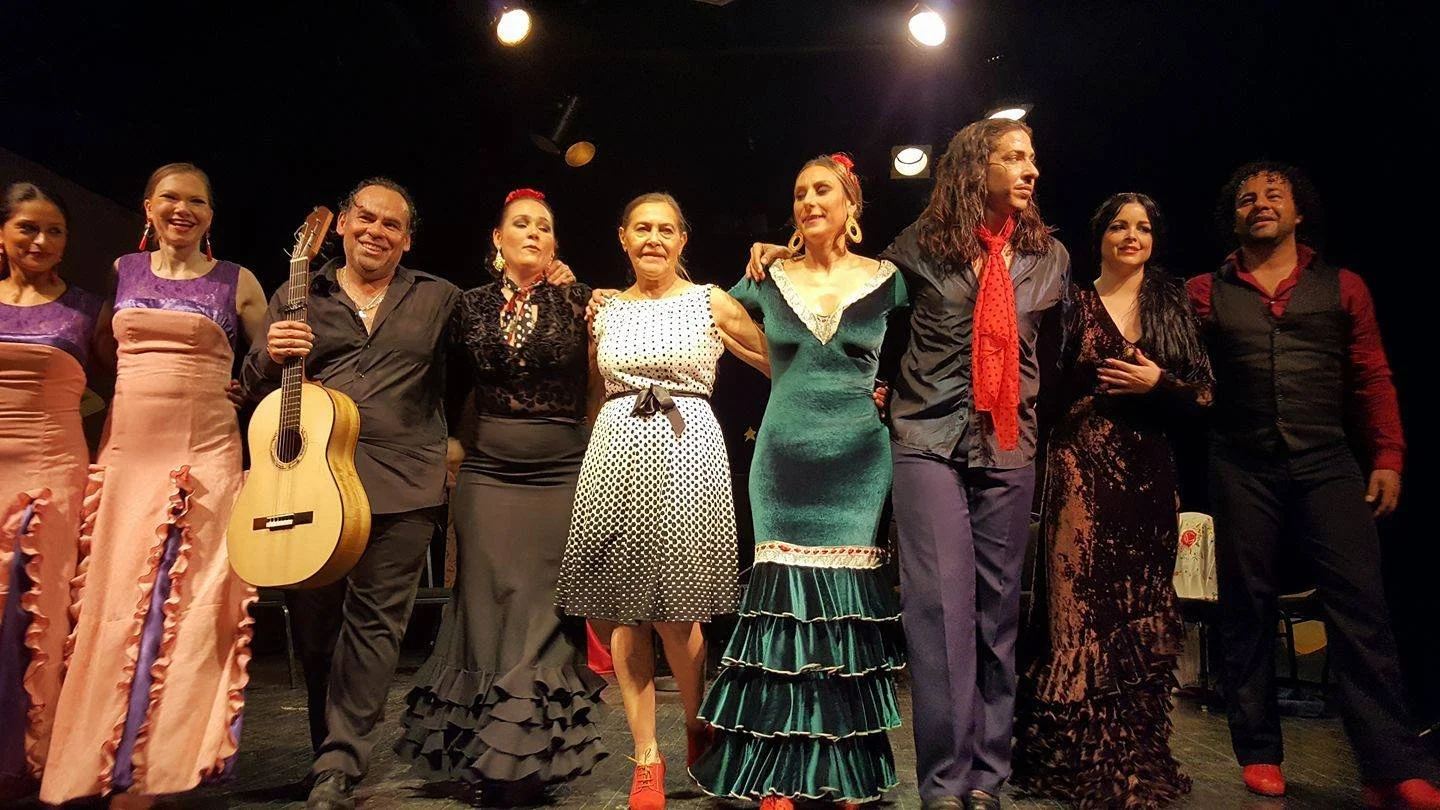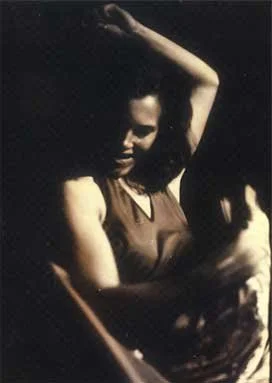
The St. Louis Cultural Flamenco Society is a nonprofit organization founded in 1986. It is one of the most prominent culturally specific dance academies founded and led by a woman in the St. Louis metropolitan area.
Bringing Spain to St. Louis through Flamenco.
About the academy.
The academy serves more than 10,000 people each year through far-reaching programs that entertain, educate and empower the community. In 1997, the academy expanded to audiences beyond the St. Louis area with engagements in Branson and Sikeston, Missouri.
Marisel Salascruz established the academy to develop a new form of expression for people of all skill and preparation levels, from beginners to advanced. One of the endeavors she is most passionate about is to bring Spanish guest artists of the highest quality to best represent the beauty of Flamenco performing arts in its three major dance forms: Regional, Classical, and Flamenco.
The academy regularly visits schools of all levels to give presentations to both individual classes and larger audiences. One such presentation is “Dances of Spain for Students,” a special concert for middle and high school students first performed in 1992. The concert presents guest artist performances, along with an introductory talk, brief history, and audience participation. Using this and other special student programs, the academy desires to augment students’ studies in foreign language, culture, and Spanish history.
The academy believes that the universal spirit of Flamenco—with diverse influences from Spanish, Arab, Jewish, Gypsy, and Latin American cultures —gives this art form a unique ability to build bridges between people. This concept informs all of their work, including the activities outlined next.
The academy’s mission is to promote Flamenco as a living art form and a vital part of Hispanic heritage, to produce and perform unique works of dance, and to provide arts education programs that catalyze connections among our youth.

About the founder.
“Like most from the south of Spain, dance was a way of life”
Marisel Salascruz, a native of Granada, Spain, is the founder and artistic director of the St. Louis Cultural Flamenco Society dance academy. Marisel was born after the Spanish Civil War, and when she was only an infant, her family left Spain due to political conflicts. Like most from the south of Spain, for her, dance was a way of life.
At the age of five, Marisel started her formal training at the National Theater of Costa Rica. Under the instruction of Olga Frannco, Marisel studied classical ballet, Flamenco, Costa Rican folk dance, and drama. Marisel performed with the National Theater throughout Costa Rica, Nicaragua, and El Salvador. For her excellent attendance and academic abilities, Marisel was awarded a dance certificate and a full scholarship.
At the age of 14, Marisel relocated to Vizcaya, in the northern region of Spain. There, she started her studies in regional dance under the instruction of Pilarin Muñoz and had the opportunity to perform for the schools of the region. She graduated from the Royal Conservatory of Seville and earned a certificate in pattern making and design from the EVA Academia in Bilbao.
Marisel came to the US to continue her nursing studies. In 1972, she relocated to St. Louis and started to perform, confident she would find supporters in the community who would keep the traditions and culture of Spain alive. Encouraged by a small group of enthusiasts, she founded the St. Louis Cultural Flamenco Society in 1986. Throughout the academy’s history, she has created landmark events and choreography that show the unique intersection of culture, history, and art.
Marisel offers both group and private instruction to adults and children at all levels of Flamenco dance. Gifted in the art of teaching, which is apparent in her experienced student body, Marisel is a motivating and inspiring instructor, committed to making learning both enjoyable and challenging for dancers of all levels. Her unique talent to break down steps with clarity and speed, as well as her quick observance of problem areas, enables students to progress rapidly.
Marisel has over 50 years of experience in dance instruction, choreography, direction and production.
Flamenco History
Flamenco History
Origin and Evolution of Flamenco
Flamenco originated in southern Spain and was brought to the region by Gypsies from India. The Gypsies, who were forced to leave India, traveled across many countries for nearly 600 years before arriving in Spain. Flamenco dance is a fusion of Jewish, Moorish, Christian and Gypsy cultures.
The Flamenco art form emerged during the eighteenth century. In its strictest sense, it is based on the folk music traditions of southern Spain, which originated in the culture and traditions of commonly known in Spanish as Gitanos or Gypsies, of Andalusia. Flamenco initially only included singing and dancing, but then the piano and Las Palmas (clapping) were introduced, and finally, the piano was replaced with the guitar. The castañuelas (castanets), also known as clackers or palillos, are of unknown origin and are used as percussion instruments in many of the old folk dances of Spain.
As a result of colonization in the Philippines, el mantón (shawl) and el abanico (fan) were adapted to the dance. Later, American influence introduced el bastón y el sombrero (the cane and the hat) to some Flamenco styles. The hat is also known as el sombrero Cordobés (Cordovan hat).
Several intellectuals, including Lorca and composer Manuel de Falla, sought to restore the purity of Flamenco, and in 1922 they instituted the first Flamenco competition. This timely attempt to prevent the further debasement of an authentic folk art effectively promoted Flamenco to a sophisticated urban public and helped to further the thoughtful development of the art within a modern context. In the last few decades of the twentieth century, Flamenco also was influenced by the general musical trend toward fusion of styles.
The constant evolution of flamenco throughout the centuries has occurred without any loss of the traditional sound and style.


















